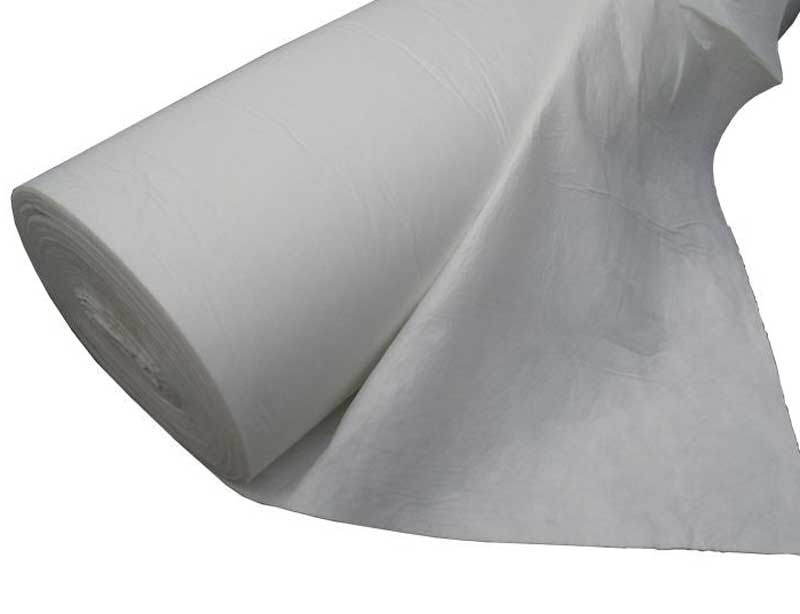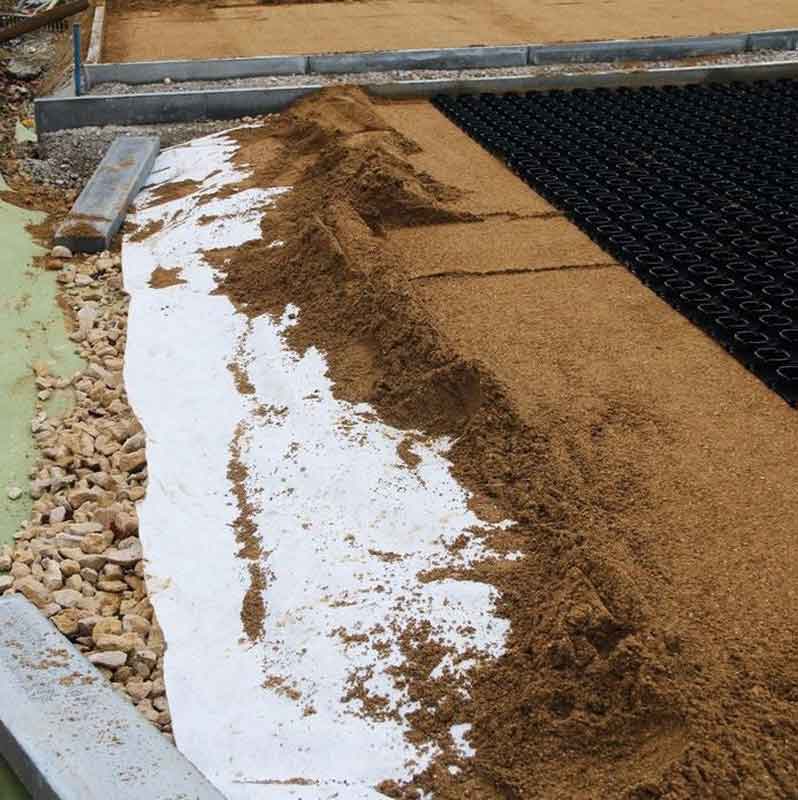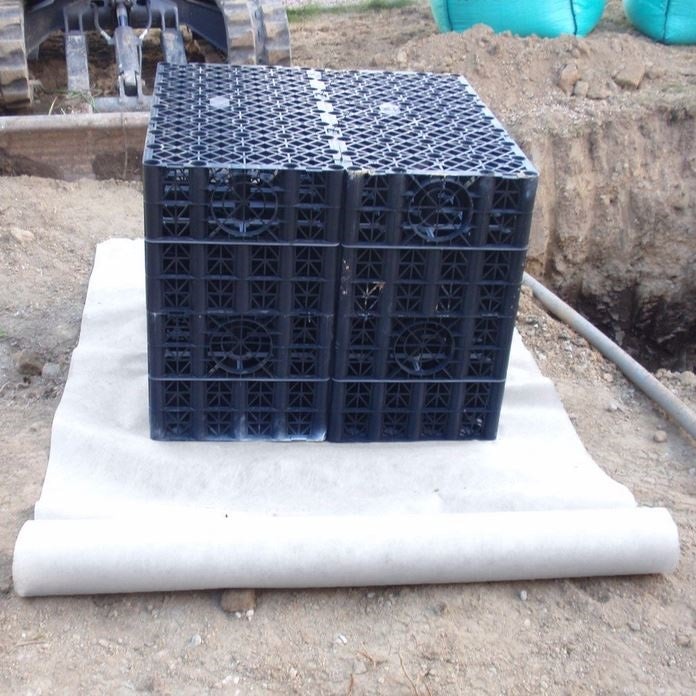What are geotextile membranes?
Geotextile membranes are pieces of fabric that are inserted into the ground as a form of protective membrane. They have a number of different functions and applications, depending on the circumstance of use, but are commonly used in drainage and engineering projects. Geotextile membranes are also known as geotextiles, or Terram – a brand that specialises in geotextiles and geocells.
What types of geotextile membrane are there?
Permeable geotextile membranes
Permeable geotextile membranes are pieces of fabric that are porous, allowing water to pass through. Permeable geotextile membranes can be woven or non-woven.
Woven permeable geotextile membranes are manufactured by weaving individual threads together to create a large, uniform piece of material. Woven permeable membranes aren’t very porous, but have high load capacities, meaning they can be used for erosion control and reinforcement projects, but may not be as effective in drainage situations.
Non-woven permeable geotextile membranes are manufactured from materials such as synthetics bonded together and have holes punched in the material.
Impermeable geotextile membranes
Impermeable geotextile membranes do not allow water to pass through the membrane, meaning that they are useful in preventing water from travelling through an area or retaining it within a specific space.
When to use geotextile membranes
Geotextile membranes are most commonly used for separation, filtration, reinforcement, protection and drainage.
Separation
Geotextile membranes can be used to separate two different types of soil. This is useful when the different types of soil shouldn’t mix, especially when water filtrates through the soil. Different types of soil can have different consistencies and coarseness, so when rainfall occurs the smaller-sized soil particles get washed into the percolation channels. As the soil mixes, the ground becomes uneven and can even sink as more of the small particles get washed down in between the larger soil particles. The geotextile membranes prevent this from occurring – they keep the different layers of soil separate, but still allow water to pass through and percolate down through the soil layers.
As well as preventing the ground from becoming uneven and sinking, geotextile membranes can prevent smaller particles of finer material from filtering down into coarser layers, which stops drainage pathways between the coarser material from getting blocked up, which allows water to percolate through the soil, reducing the potential for flooding and standing water.
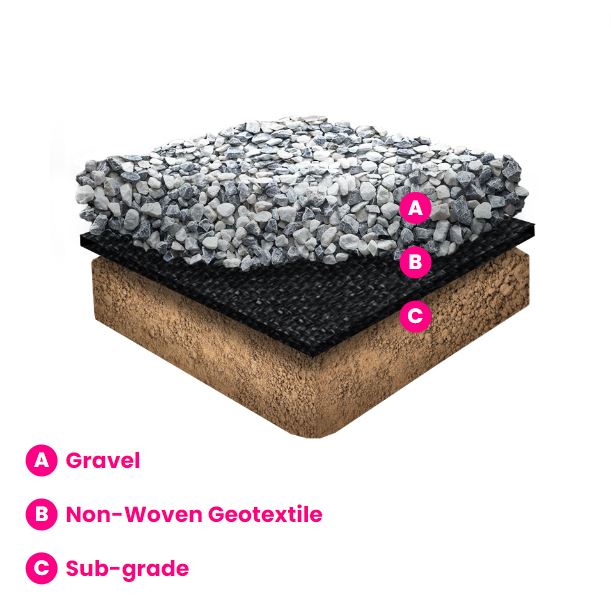
Filtration
Geotextile membranes can be used as a filtration mechanism. In many cases, drains get blocked up with debris, which causes flooding and other issues. When a geotextile membrane is used, water passes through the membrane, but any other debris or larger particles are prevented from entering the drainage system.
Geotextile membranes can be used to sort particles – the larger particles will remain on one side of the membrane, medium particles may get within the membrane without passing through the other side, whilst finer particles may pass all the way through.
Additionally, geotextile membranes can promote a lateral flow of run-off and drainage water – the membrane dissipates the kinetic energy when groundwater rises, meaning that instead of continuing to rise and cause flooding, it runs along the membrane laterally.
Reinforcement
Geotextile membranes are commonly used as reinforcement in building and engineering projects. Woven geotextiles are great for improving ground stabilisation and ground reinforcement, as they have high tensile strengths. The cross-hatch style of some geotextile membranes means they are particularly useful for retaining the shapes of drains and ditches by holding layers of soil or ground material in place.
Geotextiles are also commonly used to reinforce embankments and roads that are built on unstable soils, as they allow for steeper embankments to be created without the worry of them collapsing.
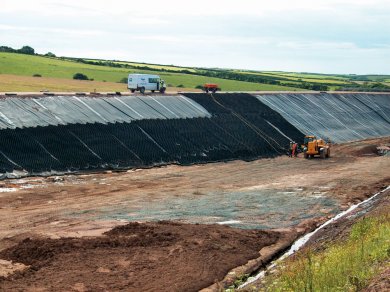
Protection
Geotextile membranes can also be used to protect against erosion, puncture resistance and more. At the coast, geotextile membranes are used between coastal defence projects and the beach material itself, to prevent erosion from occurring. Strong and robust geotextile materials are required to ensure that the coastal defence project, such as rip rap or gabions, does not tear the material, but it must still be permeable to allow drainage to occur.
Geotextile membranes can also be used to protect plants – the membrane allows the plant to grow, whilst preventing any other weeds from growing around it. This removes competition and prevents essential nutrients from being absorbed by unwanted plants.
These membranes can also be used in situations where a barrier is required to contain substances, for example at landfill sites to prevent harmful substances from contaminating the area or containing a green roof to prevent spreading. These membranes are relatively strong, but can still allow filtered water to pass through into the ground or drainage system.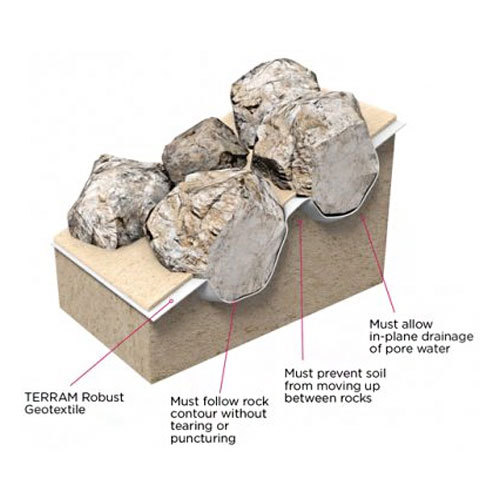
Drainage
Geotextile membranes are also used in a wide range of drainage projects such as soakaways and land drains. They are often used to line a soakaway or land drain hole before the elements are inserted, to prevent any silt or debris from entering the soakaway, extending its lifespan by preventing blockages from occurring.
Geotextile membranes can also be used to wrap land drains and perforated pipes, in the same way preventing large pieces of silt or debris from entering the drainage system and creating blockages, but in some circumstances still allowing fine particles to pass through.
Don’t wait! Head on over to our range of geotextile membranes to discover the array of products we have on offer, plus even more drainage solutions for your other projects, too!
Need further advice or product recommendations regarding geotextile membranes? Feel free to call our super team using our helpline or use the live chat on our website where they’ll offer you help with enquiries.


